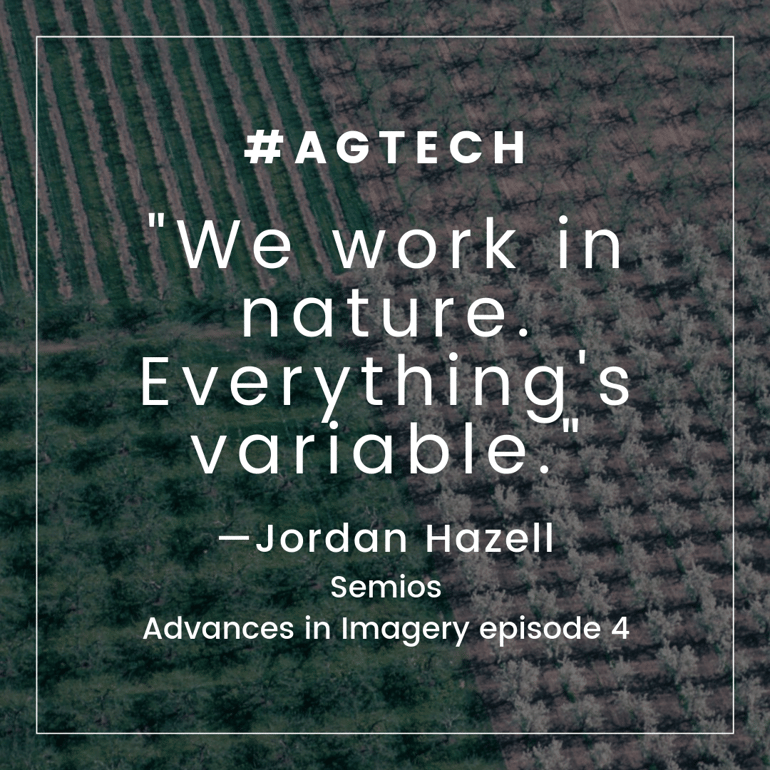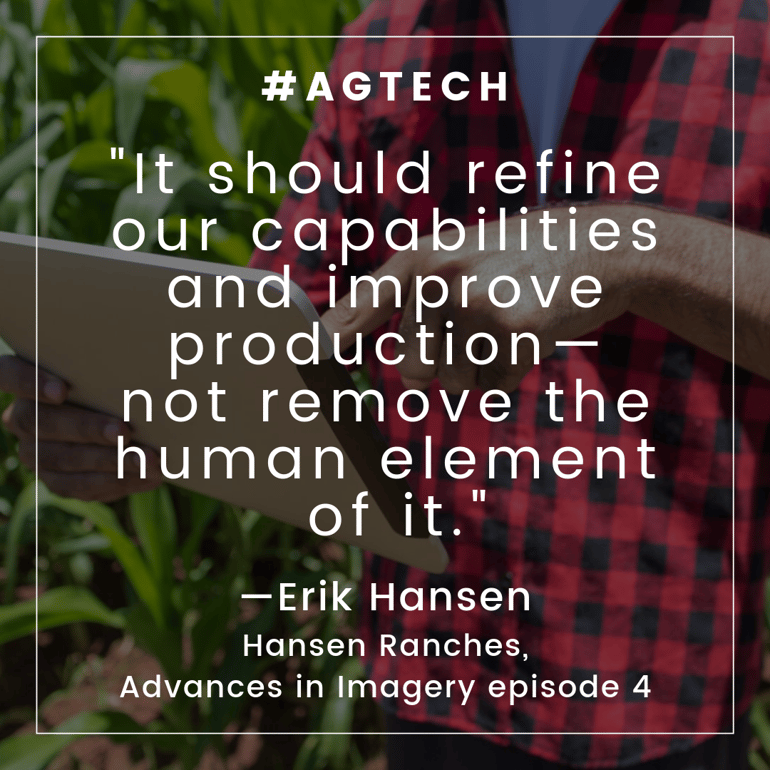
The battle against pests and disease is as old as ag—but growers' arsenal is expanding to include analytics tools that past generations of growers couldn't have imagined. On episode four of Advances in Imagery, we set out to explore these developments from both the research and implementation perspective: Erik Hansen of Hansen Ranches and Jordan Hazell of Semios joined us for a conversation on orchard management.
With a background in entomology, Jordan Hazell is the research manager at precision agriculture company Semios. His team uses networked, wireless sensors for continuous monitoring of orchards, allowing growers to head off pest and disease issues with tools like pheromone dispensers and camera traps. Starting with this real-time data from the field, Semios is able to "incorporate all those weather metrics on a per-acre basis ... and from there perform some predictive analytics on things like hull splitting, or when we can expect a certain pest stage," Hazell explains.
The flip side of technology this precise is that there's not a one-size-fits-all approach to using it. "It all depends on what disease you’re looking to manage," Hazell says. But whatever the particular concern, "it allows the grower to get a sense of—instead of a single point in the field—what does the whole field look like."

Fifth-generation grower Erik Hansen oversees 20,000 acres at Hansen Ranches, which started using remote sensing decades ago. In the early days, though, actually applying the insights gained from data could be a challenge. “We always knew that the information was useful—but putting it in the right place and in the right hands is kind of the marriage that needed to happen.” Today, widespread familiarity with smartphones and tablets—and access to mobile data—has drastically changed the landscape for the technology. "Most people can use it right off the bat," Hansen says.
Of course, mobile infrastructure falling into place doesn't necessarily amount to the real buy-in large operations need to get the most out of analytics. "You have to have people that understand the information to the point where they respect it and give it weight," Hansen says. "I think that the information that we’re getting from these technologies now does that on it’s own, and you don’t need to sell it."
... which is not to say that some people won't try! With the growing interest in precision ag, Hazell says, "you're bound to get people who'll promise you the world." But savvy managers are integrating analytics not as a replacement for their own expertise, but as a guide for where and how to apply it. "It should refine our capabilities and improve our production—not remove the human element of it."
Advances in Imagery is our new audio series produced in partnership with Malcolm Media. If you've already listened in, check your email for a link to a short quiz that will earn you PCA or CCA credit. Most importantly: we want your feedback! Is there a topic you're interested in covering in future episodes, or someone you'd like to hear on the air as our next guest? Leave us a comment and let us know.

